Shoulder
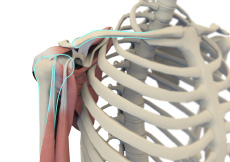
Shoulder Anatomy
The shoulder is the most flexible joint in the body enabling a wide range of movements including, forward flexion, abduction, adduction, external rotation, internal rotation, and 360-degree circumduction.
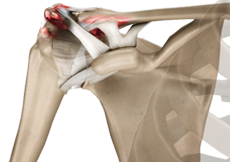
Subacromial Impingement
Subacromial impingement is one of the most common causes of pain in the shoulder. It occurs when there is a reduction in the space between the rotator cuff tendons and the overlying bone, the acromion.

Rotator Cuff Tear
The rotator cuff is a group of four muscles which envelope the ‘ball’ of the shoulder joint (the humeral head). The muscles help lift the arm but are also instrumental in keeping the humeral head down and away from the overlying bone in the shoulder, the acromion. Between the acromion and the rotator cuff muscles is the subacromial space and providing this space is preserved there should be ample room for the tendons to glide under the acromion. If there is not enough space, then the tendons can be damaged.
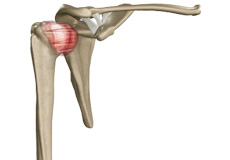
Frozen Shoulder / Capsulitis
Frozen shoulder or adhesive capsulitis is a condition characterised by pain and restricted shoulder movement. Although the disease is still poorly understood, it results in an inflammatory process, which causes the shoulder capsule to thicken and contract. The capsule surrounds the shoulder joint and in a normal shoulder it is soft and flexible thereby allowing the shoulder to move in a wide range of movement. As the capsule becomes inflamed and contracts, shoulder movement becomes restricted and the shoulder becomes stiff. The shoulder ligaments, which are imbedded within the capsule, are therefore also affected thereby resulting in further restrictions of shoulder movement.
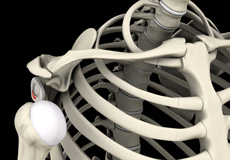
Shoulder Instability
The shoulder is the most mobile joint in the body and as such, a complex arrangement of structures is required to stabilise the shoulder during movement. Unfortunately, these structures can be prone to injury and this can influence the stability of the shoulder.

SLAP - Labral Tears
The shoulder is the most mobile joint in the body and as such, a complex arrangement of structures is required to stabilise the shoulder during movement. Unfortunately, these structures can be prone to injury and this can influence the stability of the shoulder.

AC Joint Arthritis
The Acromioclavicular Joint (ACJ) is a small joint made up of the acromion bone, which is part of your shoulder blade, and the outer end of your clavicle (collar bone). It is easily palpated with your finger as it lies 1 – 2 cm from the top outer edge of your shoulder. Because of its location, problems with the joint can give rise to pain in both the shoulder and neck.

Distal Clavicle Osteolysis
Acromioclavicular joint, or distal clavicle, osteolysis is an unusual condition in which the outer end of the clavicle (distal clavicle) undergoes multiple minor stress fractures secondary to repetitive injuries. As a consequence of these injuries, the bone is eroded at a faster rate than it can be repaired and as a result, bone erosion or 'osteolysis' occurs. This results in the loss of bone form the distal clavicle.
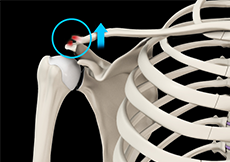
AC Joint Dislocation
The shoulder is the most mobile joint in the body and as such a complex arrangement of structures are required to stabilise the shoulder during movement. The clavicle (collar bone) is an integral part of shoulder stability and function as it helps support the shoulder and the scapula (shoulder blade). The clavicle forms a joint with part of the scapula called the acromion. This joint is termed the Acromioclavicular Joint (ACJ) and permits very small movements between the scapula and clavicle during normal shoulder movement. However, unfortunately this joint can be prone to injury.
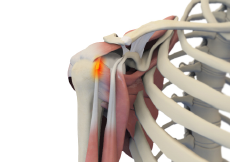
Biceps Tendonitis
The biceps muscle has two origins; the short and long head of biceps. The short head of biceps inserts in to the tip of the corocoid process, which is a bony projection off the front of the shoulder blade (scapula). This is located outside the shoulder in contrast to the long head of biceps (LHB), which originates from within the shoulder joint itself.
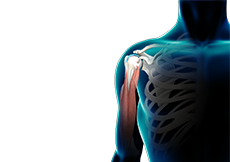
Biceps Tendon Rupture
The biceps muscle has two origins; the short and long head of biceps. The short head of biceps inserts in to the tip of the corocoid process, which is a bony projection off the front of the shoulder blade (scapula). This is located outside the shoulder in contrast to the long head of biceps (LHB), which originates from within the shoulder joint itself.

Subacromial Bursitis
The subacromial bursa is a sac like structure that lies between the acromion (part of the shoulder blade/scapula) and the tendons of the rotator cuff. It is known to contain numerous nerve endings such that it is often implicated as a source of pain in a variety of shoulder conditions.

Calcific Tendonitis
Calcific tendonitis is an unusual condition in which calcium is deposited in the tendons of the rotator duff. Although it can affect any of the four tendons of the rotator cuff tendons, the supraspinatus is the tendon that is most commonly affected.
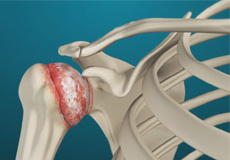
Shoulder Arthritis
Arthritis is a chronic degenerative disorder, which results in the softening and disintegration of the cartilage that lines the joint surface. It is also accompanied by the formation of new, but abnormal, cartilage and bone at the margins of the joint (osteophytes) as well as scarring of the capsule which surrounds the glenohumeral joint of the shoulder. In advanced cases there can be a loss of bone affecting both the humeral head (ball) and glenoid (socket). The affect of all these changes is that the previously smooth shoulder becomes rough such that shoulder stiffness and pain can develop.

Rotator Cuff Tear Arthropathy
Rotator cuff tear arthropathy is a chronic degenerative condition that arises in a shoulder which has two conditions affecting the shoulder joint; a massive irreparable tear of the rotator cuff tendons and osteoarthritis of the shoulder joint. The loss of the rotator cuff muscles destabilises the shoulder joint such the humeral head (ball) moves and rubs inappropriately against the glenoid (socket) thereby resulting in the degenerative osteoarthritic change.
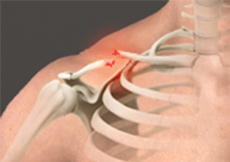
Clavicle Fracture
The clavicle (collarbone) is a bone that spans between the shoulder and the sternum (breast bone). It has a couple of important roles; the first is that it acts as a strut keeping the shoulder in the correct position and preventing it from collapsing into a more forward position. Its other role is to protect the very important blood vessels and nerves that lie just beneath the clavicle, in the neck.
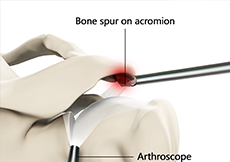
Arthroscopic Subacromial Decompression
Arthroscopic subacromial decompression is a common procedure undertaken to address the symptoms of subacromial impingement, which is not responsive to non-operative treatments. It can also be undertaken as part of a larger operation such as a rotator cuff repair.
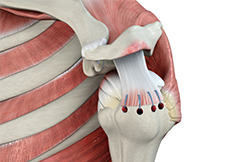
Rotator Cuff Repair
If the symptoms associated with the rotator cuff tear are such that treatment is necessary, a rotator cuff repair can be undertaken.

Arthroscopic Release of Conctracture
If a capsulitis or Frozen Shoulders does not settle with non-operative measures such as injections and physiotherapy, surgery does have a role. Indeed, it is an operation that can give very quick and satisfying results.
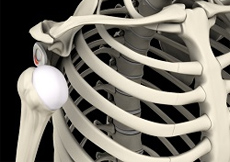
Shoulder Stabilisation
The nature of shoulder instability is complex and any treatment or operation will always be tailored to the patient’s pathology. However, most stabilisation procedures will usually involve an arthroscopic procedure in which a torn labrum is either repaired back to the glenoid (socket) rim or alternatively, lax capsular tissue is tightened or plicated. The effect of these procedures is to provide greater security to the shoulder joint so that shoulder stability is restored.
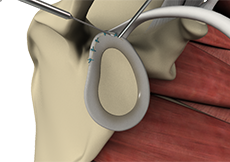
SLAP Repair
A SLAP (Superior labrum anterior and posterior) tear can develop after either recurrent shoulder dislocations or secondary to the excessive mobility of the long head of biceps tendon. Overhead athletes are particularly prone to this injury and if, after a full clinical and MRI assessment, it is decided that this needs to be repaired, then an arthroscopic (keyhole) procedure will be needed.

AC Joint Excision
If acromioclavicular joint (ACJ) arthritis or a meniscal injury has developed, then ACJ related pain can develop. If the pain is resistant to non-operative treatments, then surgical intervention in the form of an ACJ, or distal clavicle excision, may be necessary.

AC Joint Stabilisation
The stabilisation of a dislocated Acromioclavicler Joint (ACJ) can be undertaken in a number of different ways depending on the nature of the dislocation and the time that has passed since the initial injury.

Biceps Tendodesis
The biceps muscle has two origins; the short and long head of biceps (LHB). Although the origin of the short head of biceps is outside the shoulder, the long head of biceps originates from within the shoulder and is therefore prone to injury.

Arthroscopic Subacromial Bursectomy
Arthroscopic subacromial bursectomy is a common component in other operations such as a subacromial decompression or rotator cuff repair, but it can occasionally be undertaken as the primary procedure in the management of a bursitis that has not responded to non-operative treatments.

Arthroscopic Calcific Debridement
Calcific tendonitis is an unusual condition in which calcium is deposited in the tendons of the rotator duff. Although it can affect any of the four rotator cuff tendons, the supraspinatus is the tendon most commonly affected.
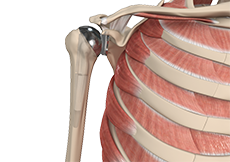
Shoulder Replacement
A shoulder replacement is used to minimise any pain that might be occurring secondary to any degenerative changes (arthritis) of the smooth surfaces of the ball and socket of the shoulder joint. A shoulder replacement can come in many different designs, and the appropriate implant will be chosen depending on the pattern or severity of your arthritis. If only the humeral head (the ball) is replaced then the operation is referred to as a Hemi-arthroplasty.

Reverse Shoulder Replacement
Rotator cuff tear arthropathy is a chronic degenerative condition that arises in a shoulder as a result of a significant irreparable tear of the rotator cuff tendons and the development of osteoarthritis of the shoulder joint. This results in pain and stiffness and because of the lack of muscle and tendon the shoulder is usually painful and demonstrates poor function, such that it can prove very difficult to lift the arm.
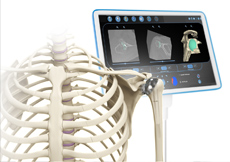
Computer Aided Joint Replacement
In advanced cases of osteoarthritis or cuff tear arthropathy, the bone of the glenoid (socket) may be so badly damaged that conventional joint replacement may be extremely difficult or impossible to undertake. In such circumstances, the use of digital technology can be used to both plan and undertake, the surgery so that postoperative function and implant survivorship is optimised.

Clavicle Fracture Fixation
The surgical treatment for a fractured clavicle is always tailored to the patient and the nature of the fracture.





